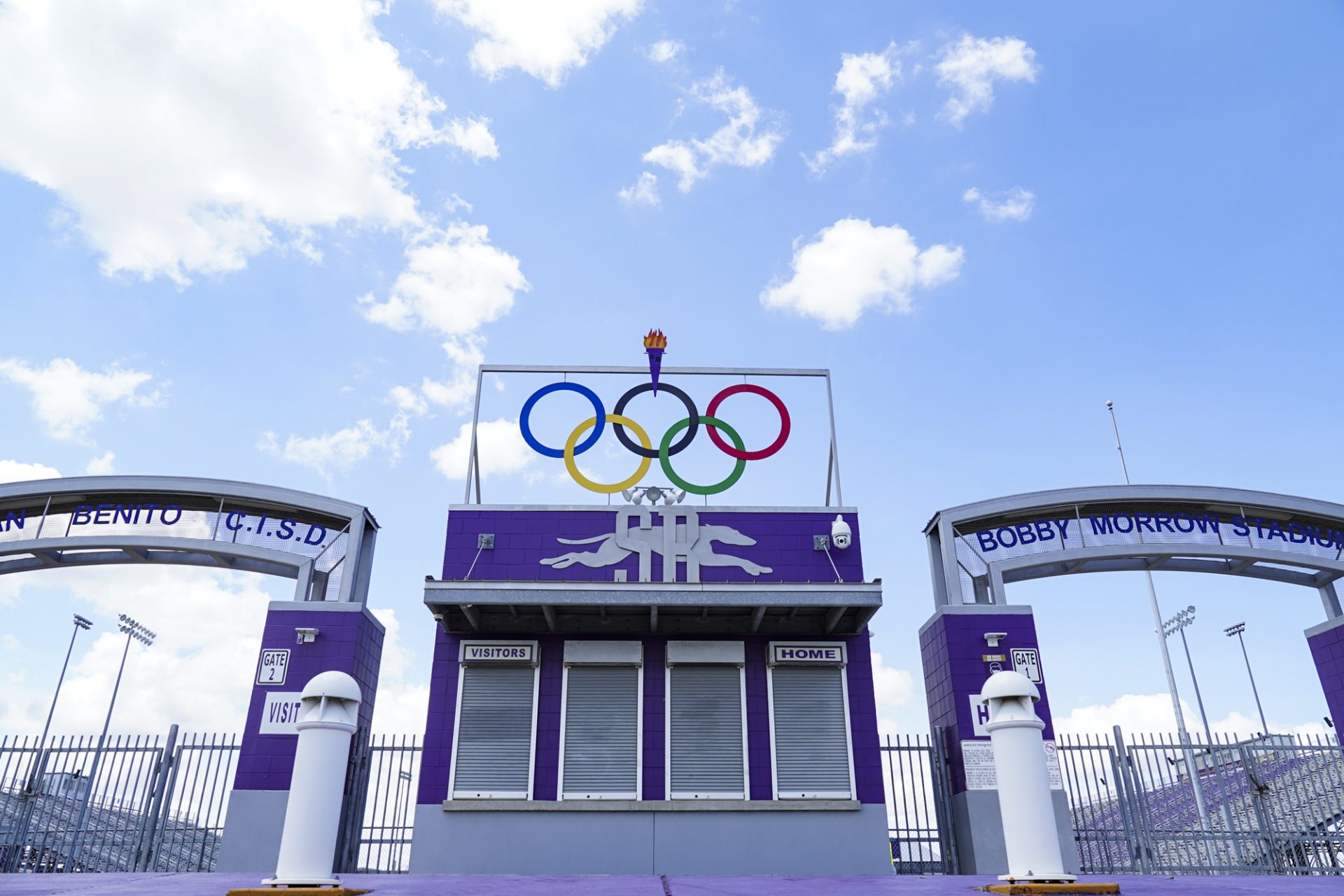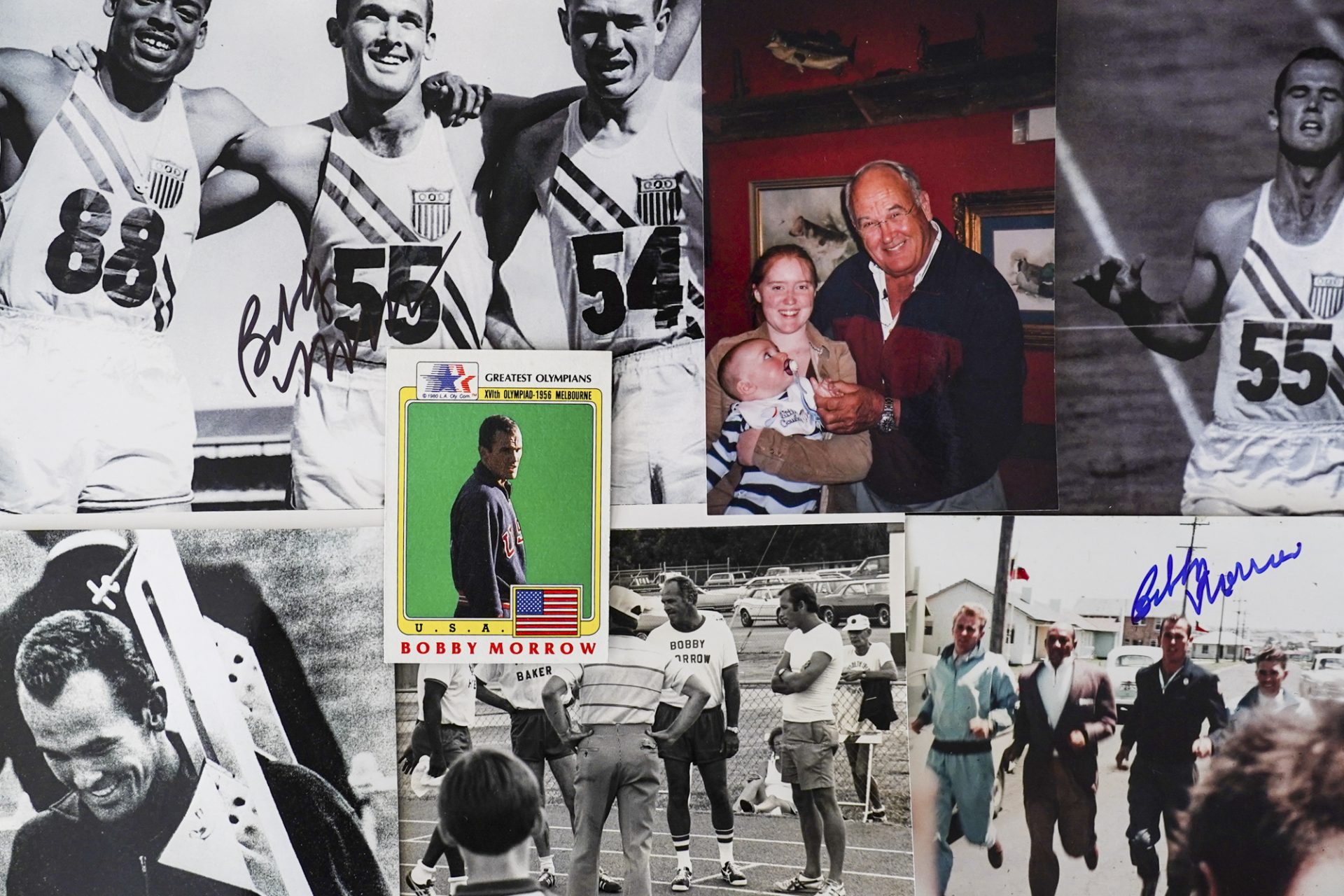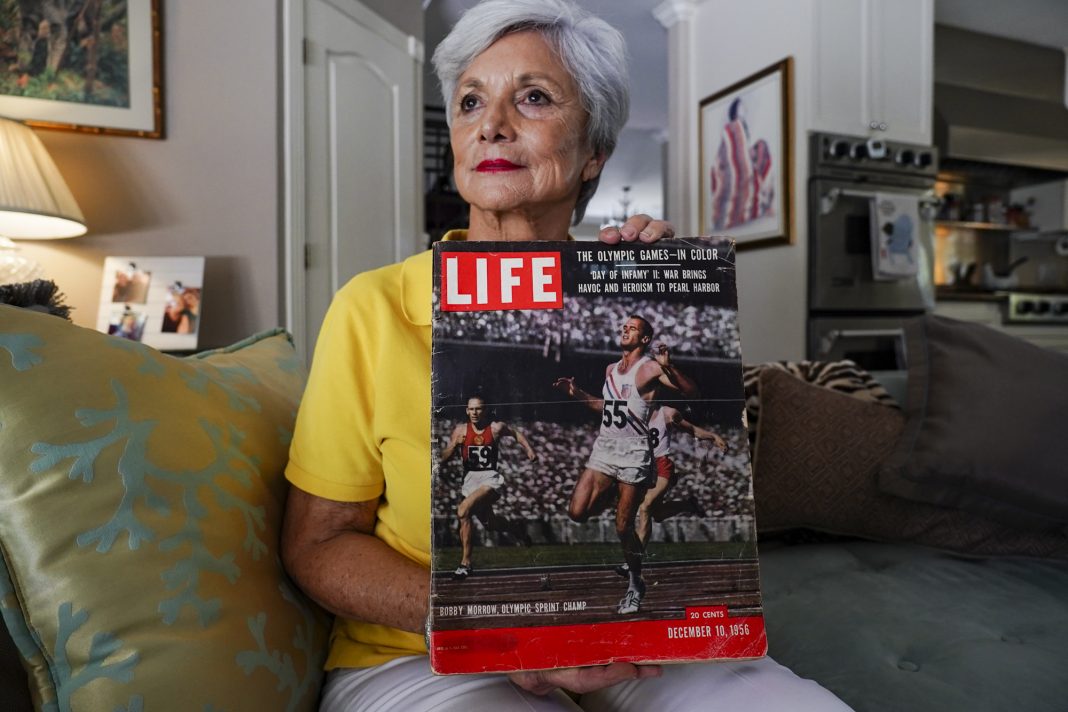SAN BENITO — On San Benito High School’s old dirt track, Bobby Morrow trained to become the man known as “the world’s fastest human.”
Two years later, he brought home three gold medals from the 1956 Olympics in Melbourne, Australia, hailed as “the greatest sprinter of all time.”
Now, the Texas Historical Commission is honoring his legacy with a historical marker which will grace the stadium christened with his name 16 years ago.
“It’s a great honor,” Judy Parker, Morrow’s longtime partner who was standing by his side when he died at 84 on May 30, 2020, said at her home here. “It’s great that it’ll be there for everyone to view. Hopefully, it will be an inspiration to young people — this is what you can achieve if you set your mind to it.”
Since 2019, Sandra Tumberlinson had been working with family members to apply to the historical commission for the marker.
“We, as a family, are honored that he has a place in his favorite part of Texas,” Elizabeth Kelton, Morrow’s daughter, stated. “I am so grateful of the time and effort the San Benito Historical Society put forth obtaining a historical marker for my father.”
Research leads to commission decision
For six months, Tumberlinson researched Morrow’s life story to write the narrative supporting her request for the historical marker.
“Bobby came from a farming family, ran on dirt tracks at the old stadium and won the hearts of America when he brought back three Olympic gold medals from the 1956 Olympics in Melbourne, Australia,” Tumberlinson, who co-founded the San Benito Historical Society, stated. “Bobby’s humble attitude, evident when he said, ‘Going to the state meet from our little high school in San Benito was something,’ stayed with him all his life. We are proud to honor Bobby with this state historical marker proclaiming his accomplishments and prouder still that he called San Benito home.”

‘Community treasure’
This year, the historical marker was among 134 which the commission authorized, agency spokesman Chris Florance said.
“The Official Texas Historical Marker program helps bring attention to community treasures and the importance of their preservation,” Mark Wolfe, the commission’s executive director, said. “Awareness and education are among the best ways to guarantee the preservation of our state’s history. This designation is a tool that will increase public awareness of important cultural resources.”
High school star
At San Benito High School, Morrow entered the athletics program playing running back for Coach Jim Barnes’ Greyhound football team.
“‘When I got around the end,’” Tumberlinson wrote in her 64-page narrative, recalling his words, “‘nobody could catch me.’”
By early 1952, he was a sophomore when he joined the track and field squad.
“They saw I had speed so they wanted me to go out for track,” Morrow recalled.
In the school’s wood-working shop, he built starting blocks to help brace his feet on the track.
Before afternoon practices, his father Bob Floyd Morrow would drive his tractor to school “to level and smooth out the dirt track,” Tumberlinson wrote.
As a sophomore under Coach Jake Watson, Morrow qualified for the state competition.
A year later, he was back at the big meet, winning the 100-yard dash.
During his senior year, he won the 100 along with 220-yard dash.
“It was a great experience for me just to be in Austin,” Morrow recalled. “Going to the state meet from our little high school in San Benito was something.”
By the time he graduated in 1954, Morrow was a state champion, dominating the 100-yard dash.
80 college championships
Through his high school years, Morrow was not planning on going on to college.
“I was going to stay home and farm with my dad,” he said. “I didn’t prepare my studies and grades to go to college. I had to go to summer school to get the credits I needed to qualify.”
After entering Abilene Christian College, he went on to win 80 sprint championships.

Olympic legend
Then in 1956, Morrow became the only San Benito High School athlete to compete in the Olympic Games, Leo Rodriguez, a local historian, stated.
In Melbourne, he became a legend, winning three gold medals, reigning over the 100-meter dash and the 200-meter sprint while leading his team to the gold metal in 4×100-meter relay.
Suddenly, Morrow was a superstar, featured on the covers of Life Magazine, Sports Illustrated and Sport Magazine, his big beaming smile even splashed on cereal boxes.
In 1956, Wayne Powell was a boy when Morrow walked onto the stage of the Ed Sullivan Show.
“There was a lot of excitement,” Powell, the San Benito Historical Society’s president, recalled. “He was on the cover of Sports Illustrated. He was on the cover of Life Magazine. He was on cereal boxes. There was a lot of excitement around the nation. He was the fastest man in the world at the time — he almost looked like he wasn’t even touching the ground.”
Legacy
In track, Morrow’s records were hard to beat.
“From 1956-58, Bobby Morrow won all the major sprinting titles for which he competed …, becoming the first man since fellow American Jesse Owens to do the sprint treble,” Tumberlinson wrote. “He broke Owens’ Olympic record in the 200m before anchoring the USA to a new 4x100m record. Carl Lewis (1984) and Usain Bolt (2012 and 2016) are the only other men to win the three sprint titles at the same games. Not since Jesse Owens had a sprinter so dominated the Olympic track. Not until Carl Lewis and Usain Bolt would a man do so again.”
In 1989, Morrow was inducted into the National Track and Field Hall of Fame.
Then in 2016, he was instated into the Texas Track and Field Coaches Hall of Fame.
Bobby Morrow Stadium
On Oct. 13, 2006, Morrow helped dedicate the new $4 million, 12,000-seat football stadium that bears his name.
“Thank you for the honor that is beyond everything I had ever hoped for,” he told the sold-out crowd as he stood on the 50-yard line surrounded by family and friends. “I can’t tell you how I feel to be recognized by my hometown.”
Now, a ceremony is being planned to commemorate the historical marker’s installment, expected early next year, Tumberlinson stated.
“It is vital that as we move forward we do not forget our past,” she stated. “Not only will the Texas historical marker provide awareness in the community of our fascinating history but it will become a building block for the promotion of local tourism.”





